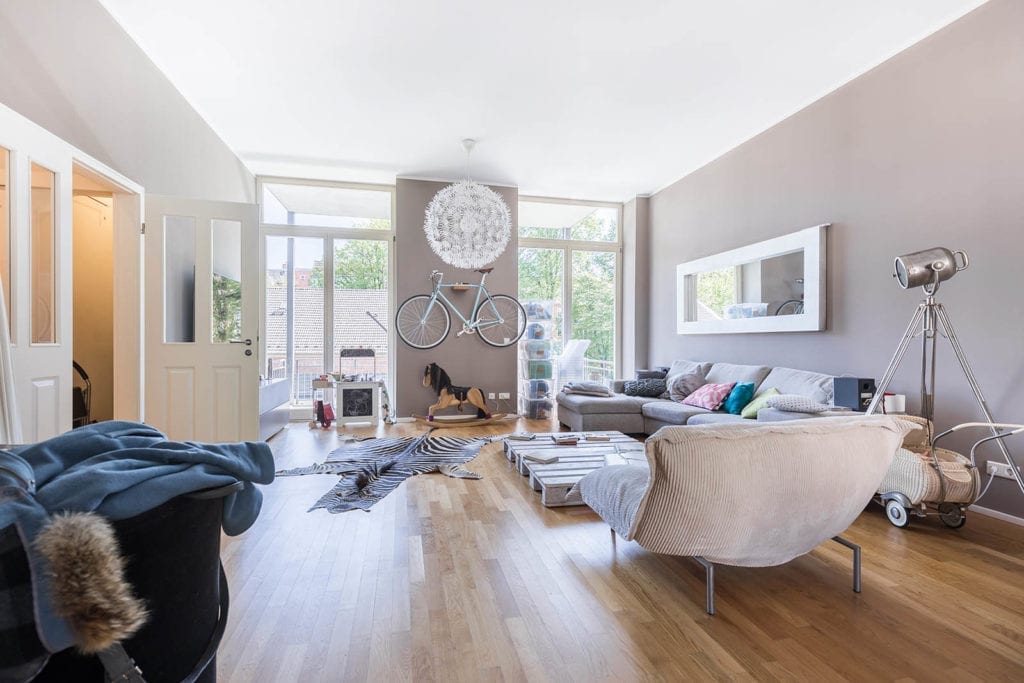Follow these steps to keep your home and your family safe
What’s the best way to keep your home and family safe? With so many home security systems available to consumers at affordable prices, your options are endless. In 2025, key differentiators include on‑device AI that filters people/vehicles/packages to cut false alerts, hybrid cloud + local recording for resilience, cellular and battery backup, and privacy/security signals such as the U.S. Cyber Trust Mark. Many monitored systems can transmit rich incident data directly to 911 via platforms like RapidSOS, improving dispatch speed and accuracy. Reliability, ease of use, and value continue to drive satisfaction with providers, according to J.D. Power research. With this home security checklist, we’ll take you room by room through your home and explain the different ways you can create a custom safety system that works for you.
While it’s a good idea to do a complete walkthrough of your home while following this home safety checklist, remember that most of the steps on the list need to be regularly maintained. Set reminders to test alarms monthly, replace batteries on schedule, verify cellular failover quarterly, and keep device firmware current. Enable multi‑factor authentication and review access sharing and update policies per CISA’s Secure by Design guidance. For carbon monoxide protection, follow listing and code requirements: standalone residential alarms should be listed to UL 2034 (with end‑of‑life indicators), system detectors to UL 2075, and install per the 2024 IRC and NFPA 72 (2025). The USFA notes typical UL 2034 response times: alarm at 70 ppm within 60–240 minutes, 150 ppm within 10–50 minutes, and 400 ppm within 4–15 minutes.
Home Safety Checklist: Outside Your Home

The area outside your home is your first line of defense when it comes to your home safety checklist. Use layered deterrence: robust lighting and clear sightlines, smart detection and verification, and physical barriers where needed. These principles echo current security megatrends that prioritize AI analytics, cyber‑secure devices, and hybrid cloud deployments (SIA 2025 Megatrends) and guidance for public spaces that stresses lighting, surveillance, and access control (CISA).
⃞ Illuminate Your Home’s Exterior with Outdoor Lights
Outdoor security lights are an effective but inexpensive way to secure your home. Even, adequate lighting supports natural surveillance and deters opportunistic crime; pair dusk‑to‑dawn fixtures with motion‑activated lights near entries and driveways. When selecting connected fixtures, prefer vendors that follow secure‑by‑default practices and carry or align to the U.S. Cyber Trust Mark, and follow layered lighting recommendations in CISA’s protective measures.
⃞ Make Sure Your House Number is Visible
If emergency services are dispatched to your home, they need to be able to find the house quickly. Make sure the number is prominently displayed and visible from the street day and night. Clear addressing complements modern emergency‑response integrations that can send incident details directly to 911 through RapidSOS.
⃞ Install Outdoor Security Cameras
With modern outdoor cameras, you can monitor your home’s safety, get notifications on your phone when unusual activity is detected, and even opt in to professional 24/7 monitoring. Look for on‑device AI (people/vehicle/package) and privacy zones to reduce false alerts, and consider local recording options for resilience. Cameras are not yet natively covered by Matter 1.4, so plan ecosystem integrations accordingly. Review privacy practices via Mozilla’s Privacy Not Included and favor devices aligned to the Cyber Trust Mark.
⃞ Greet Guests with a Video Doorbell
In addition to acting as a normal doorbell, video doorbells help keep your home safe by showing you who’s at the front door before you go to open it. Newer models add radar‑based 3D motion for better zoning and fewer false alerts (see examples in the Ring press room). As with cameras, check independent privacy evaluations (Mozilla).
⃞ Mow the Lawn Early
According to the California Wildland Fire Coordinating Group, you should always mow your lawn before 10 A.M., and never during extremely dry weather spells. Reducing spark risks around your property is one layer in broader wildfire mitigation; national wildland fire activity varies year to year, with 2023–2024 acreage burned well below extreme seasons earlier in the decade (NIFC).
⃞ Get Your Chimney Cleaned
Hire a chimney sweep annually to inspect and clean your chimney, removing potentially hazardous residue before the heating season. Heating equipment is a leading cause of home fires after cooking, contributing to thousands of residential incidents each year (NFPA Fire Loss).
⃞ Put a Fence Around Your Pool
Drowning risk for young children is significant around residential pools. Install a four‑sided fence with a self‑closing, self‑latching, locking gate around your in-ground pool and add door and pool alarms as extra layers. Proper barriers reduce risk and may improve insurability or eligibility for mitigation credits in some markets discussed in current insurance research.
⃞ Maintain Outdoor Play Equipment
Check swing sets and jungle gyms frequently for loose fasteners, splintering wood, rust, and pinch points; repair or replace worn components promptly. For child injury prevention trends and product safety insights, consult CPSC research on nursery products and apply similar vigilance to outdoor equipment.
⃞ Install a Trampoline Net
Trampoline jumping might be fun, but backyard trampolines cause almost 100,000 emergency room visits each year. If you do decide to get a trampoline, make sure it comes with a high, properly tensioned net and edge padding, set clear usage rules, and supervise to reduce fall and collision injuries; monitor evolving injury data via CPSC.
⃞ Put Away Tools and Ladders
If you’re handy at DIY projects, you probably own at least a few pieces of home maintenance equipment. Just make sure to return dangerous tools and ladders to the garage when you’re done to prevent child injuries and to avoid giving intruders easy access to upper windows. Good perimeter hygiene complements the layered measures recommended by CISA.
Home Safety Checklist: In the Kitchen

Did you know that the kitchen is the most common source of residential fires? Nationally, the U.S. sees roughly 1.5–1.7 million fires annually and several thousand civilian fire deaths; cooking is the leading cause of home fires and injuries, while smoking materials are a leading cause of home fire deaths (NFPA Fire Loss). Use this checklist to reduce kitchen fire risk.
⃞ Upgrade to Smart Smoke Detectors
Your home should already have working smoke and CO detectors, but smart smoke detectors take home fire safety to a new level with app alerts and interconnection. When paired with professional monitoring, alarm data can be delivered digitally to 911 via RapidSOS. Install system devices per NFPA 72 (2025); for CO alarms, select products listed to UL 2034 (residential) or UL 2075 (system detectors) and follow the 2024 IRC for placement and interconnection.
⃞ Clean Your Stove
Grease can build up on your stove over time. Since grease buildup is highly flammable, you should make sure you’re cleaning your stovetop regularly and keeping combustibles away from burners. Cooking remains the top driver of home fires in national statistics (NFPA), so stay with the pan and keep lids and baking soda within reach.
⃞ Install Smart Outlets
Appliances like toasters and coffee makers that have been left plugged in pose a major fire safety threat. Smart outlets allow you to shut off power to the appliance from the convenience of your smartphone, and many platforms now support local automations that continue working during internet outages (see Matter 1.4 updates).
⃞ Purchase the Appropriate Cooking Oil
Some cooking oils smoke and burn at lower temperatures than others. Use this guide to make sure the oil you use won’t overheat and cause a fire.
⃞ Keep a Fire Extinguisher Handy
The best way to prevent fires in the kitchen is to eliminate risks that could lead to one. But accidents happen, so make sure you have a working, appropriately rated fire extinguisher nearby and that everyone knows how to use it; test alarms monthly and review your evacuation plan.
Home Safety Checklist: In the Living Room

The living room is a place where the whole family can spend carefree time together. Use these steps to improve day‑to‑day safety and reduce false alarms—factors that strongly influence satisfaction with security providers (J.D. Power).
⃞ Connect Everything to a Smart Hub
Most smart security devices can be integrated into a smart home system. Use a smart hub to manage your entire home security system and run local automations that still work when the internet is down. Plan interoperability carefully: even after the Matter 1.4 update, most IP cameras are not covered by Matter, so camera integrations remain ecosystem‑specific.
⃞ Fit Your Front Door with Smart Locks
With smart locks, you can unlock your front door from your phone and change your entry passcode as often as you need. Look for unique credentials, long‑term update support, and multi‑factor authentication; the U.S. Cyber Trust Mark helps compare device security posture. Use door‑position sensing and auto‑relock to improve day‑to‑day safety and security.
⃞ Purchase Cordless Window Treatments
Some traditional window blinds have long, dangling cords that can become safety risk when young children are running around. Go for cordless window treatments instead, and prefer connected devices that follow modern consumer IoT security baselines (e.g., unique passwords, declared support periods) now mandated in the UK under PSTI and influencing global products (PSTI).
⃞ Put Light Switches at the Top and Bottom of Stairs
The last thing you want to do is try to climb up or down the stairs in the dark, so make sure light switches are placed where you can get to them. Motion‑activated night lighting on stairways and hallways is a simple upgrade that reduces falls and improves evacuation visibility if alarms sound.
Home Safety Checklist: In the Bedroom

Emergencies can quickly become even more serious at night when the whole family is asleep. Use connected safety to your advantage: configure automations that turn on lights and unlock exits when smoke/CO alarms activate so you can evacuate faster, and ensure these routines run locally during outages.
⃞ Place Smoke Detectors in Sleeping Areas
You should place smoke detectors in every bedroom and outside every sleeping area, and on every level of your home, following manufacturer instructions and applicable codes such as NFPA 72 (2025). Working smoke alarms are associated with roughly half the risk of dying in a reported home fire compared with homes without working alarms (NFPA: Smoke Alarms).
⃞ Check CO Monitor Placement
Carbon monoxide is a deadly gas that cannot be smelled, tasted, or seen. CO detectors should be placed outside sleeping areas and on every floor of your home per the 2024 IRC R315. In new construction, alarms are typically hardwired with battery backup and interconnected so all sound together. Select devices listed to UL 2034 (or UL 2075 for system devices); typical response times are 70 ppm (60–240 min), 150 ppm (10–50 min), 400 ppm (4–15 min) per USFA. Design, signals, and maintenance of system-connected detection are covered by NFPA 72 (2025).
⃞ Buy Flame-Resistant Bedding
Fires can spread quickly. Consider flame‑resistant sleepwear and bedding for children’s rooms, keep space heaters and charging devices clear of textiles, and ensure outlets aren’t overloaded. Combine with interconnected alarms for early warning and practiced evacuation routes.
⃞ Keep a Flashlight Nearby
You’ll be thankful to have a flashlight in your bedside table when the power goes out and you need to safely move around the house. Also keep backup power for critical devices like medical equipment and security hubs.
Home Safety Checklist: For Kids and Seniors

If your family includes older or younger members, you might be especially concerned about following an elderly home safety checklist or a home safety checklist for kids. Older adults face a high fall burden—one in four adults 65+ falls each year (CDC)—and pediatric risks include hot‑car heatstroke (NHTSA) and nursery product injuries tracked by CPSC. Tailor devices and routines to these risks.
⃞ Give Kids Control with an Echo Dot
The Amazon Echo Dot Kids Edition is the perfect way to get kids excited about home safety. These smart home devices come in fun colors and will help your child learn to use basic functions of your home security system. Enable parental controls, review privacy settings, and favor connected devices that follow secure‑by‑default practices per CISA; consult independent privacy evaluations when available (e.g., Mozilla for camera/doorbell categories).
⃞ Install a Non-Skid Tub Mat
Bathtubs are slippery, and even a closely supervised child or senior could be at risk of a fall. Non-skid mats are inexpensive and can be installed in a matter of minutes. Pair with night lighting and grab bars where appropriate, given the high fall incidence among older adults (CDC).
⃞ Set Elderly Family Members Up with Medical Alert
Some of the best-rated medical alert systems help give seniors independence at home while you get peace of mind. Most include features like fall detection, GPS tracking, and voice communication; one in four adults 65+ falls each year, underscoring the value of fast assistance (CDC). If you choose professional monitoring, confirm efficient emergency data sharing via platforms like RapidSOS.
The Bottom Line
With this home security checklist, you’ll get a better night’s sleep with the peace of mind that your family is safe. You’ll even be able to go on vacation without having to call a neighbor to check on your home, thanks to local‑first automations, reliable connectivity (including cellular backup), and modern monitoring that can transmit rich alarm data to 911 through RapidSOS.
Even with the best security planning, sometimes incidents out of your control can cause damage to your home or injure your loved ones. Make sure you have a homeowners insurance policy that covers your financial assets, especially if you live in an area that is prone to break-ins or adverse weather events. Premiums have risen broadly in recent years (see the BLS CPI series for tenants’ and household insurance), and availability has tightened in some high‑risk states, with more households relying on FAIR Plan or other backstops. Mitigation can help: states and insurers are expanding discounts for home‑hardening (e.g., California’s Safer from Wildfires) and other loss‑reduction steps; California’s Sustainable Insurance Strategy aims to stabilize availability in wildfire zones. Review roof settlement terms (RCV vs ACV), special wind/hail deductibles (III), and add endorsements like water backup as needed; see the NAIC consumer guide and recent loss trends (LexisNexis).




